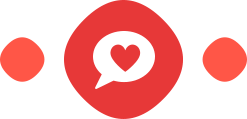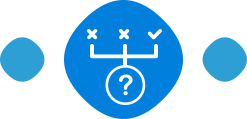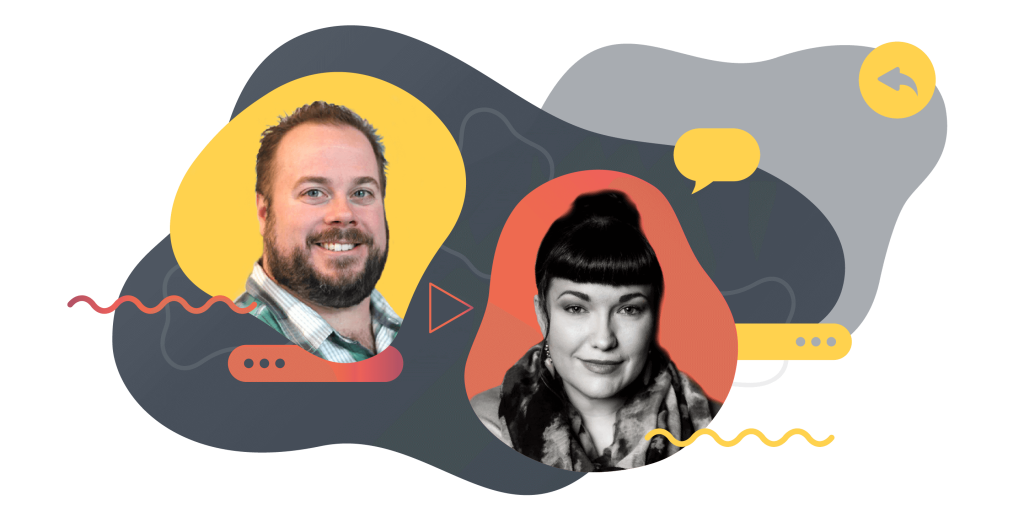Why it is so important to invest in developing a self-sustaining team? Find out in our newest episode of the Support Talks.
In Ken Blanchard and Randy Conley’s book, Simple Truths of Leadership, they observed that “The most important part of leadership is what happens when you’re not there.” The idea that leaders must be present in order for their teams to function not only encourages micromanagement, but it distracts both the employees and the leader from doing their best work.
Creating a strong team means that you trust them to consistently and reliably perform without someone looking over their shoulder. This autonomy leads to more employee engagement.
Jerry Ishmael, Client Support Team Manager at TrackTik, believes that this autonomy leads to self-sustaining, higher-performing teams. In this chat, we discuss the benefits of this leadership approach.
Start your day
with great
quality
content
Let’s start with defining what does Self-sustaining team mean to you?
Jerry: The obvious definition is that you are able to provide for your own needs without help from others. I often quote a more robust definition from Wikipedia:
“Self-sustainability and self-sufficiency are overlapping states of being in which a person or organization needs little or no help from, or interaction with, others. Self-sufficiency entails the self being enough, and a self-sustaining entity can maintain self-sufficiency indefinitely.”
In our world of Support, self-sufficient is easily associated with the numerous initiatives and programs that build self-service resources and tools for customers. These initiatives are closely linked to the organization’s needs to satisfy customers and reduce churn, which leads to a healthy lifetime value (LTV) per customer, which in turn helps maintain revenue.
What we often don’t consider in this model is the employee experience. I believe that it is obvious to state that employee experience directly correlates to how we treat our customers and guide them to sign-up, buy, and use the product and services we support.
How does this approach relate to employee engagement?
Jerry: To have a self-sustaining team would be to invest the same, if not more, effort developing the skills and resources that allow for team members to service customers and ultimately get to a solution. Leaders of Support and CX must enable their teams as a prime objective. This usually starts with training.
Training needs to be viewed beyond ‘onboarding in your role’ to ‘onboarding in the organization beyond your role.’ Engaging and presenting to your team members how the business operates in all capacities and demonstrating that what they do in their role impacts others is key. Setting OKR’s that are publicly visible and actionable within the organization facilitates this.
A clearer objective helps the team understand their role, their impact, and their expectations. Provide your team with all the information and data they need to complete a task. Training on how, where, and what they can do as part of their role is one step of a self-sustaining team.
Additionally, the individuals want to know what they are doing well. So this clarity and training helps with career development when people have yearning to grow or move to other parts of the organization. It helps focus 1:1 meetings where we can discuss tools to build out their own portfolio to get to that next level.
Promoting a common vision helps to remove the clock-in/clock-out mentality and focus on relationships, both with customers and internally. It also removes the need to micromanage the metrics. Metrics should be developed in a way that is very accessible and holistic. “What value is the individual providing?” vs “are they achieving a number?”
I also involve the team in the KPI setting, as how each agent achieves OKRs might be different based on individual strengths. Many companies cascade goals from “Company” to “Team.” I take it one step further, to the individual contributor. Then in 1:1s we can follow up on the objectives: “What have you done to achieve these objectives over the past week?”
This added flexibility and autonomy allows the individual to focus on the parts of the role that are most engaging to them, while still aligning to the role and the company’s goals.
And finally, we give access to the Calm app, involve our team in awareness of mental health and DE&I initiatives, as well as allow volunteer days. These types of benefits and resources help keep stress low both inside and outside of work. Being more aware of these important concepts, and having the time and autonomy to practice them is a huge benefit to employee engagement.
How does a more engaged team benefit the business or the customer?
Jerry: Well, I mentioned that each individual has their own KPIs. This gives the ability for those with higher aspirations to work towards roles and responsibilities that produce higher value to the organization and ultimately to the client experience.
It also gives the ability for leadership to focus on being a servant leader that can advocate for the team and ensure they have what they need to succeed. In fact, self-sustaining teams help direct leadership based on what they are reacting to on the frontline providing an agile organization able to accommodate the customer quickly and efficiently.
But mostly, autonomy gives agents the ability to manage the response, solution, or next steps for customers without delay. I encourage the creation of their own processes and resources to get to the one common objective.
There have to be some guardrails, for example, OKRs need to be used to provide guidance and planning has to include your team, but in general, processes and workflows are more organic and practical when created by the people who actually have to execute them. Which makes them fit perfectly with the customer expectations they hear every day, and often are optimized for the business.
With so many goals across the team and with a stated goal of less oversight…
Craig: …how does the team, or leadership for that matter, monitor and measure success? How do you stop this from becoming chaos?
Jerry: Using open and transparent OKRs that anyone can monitor and react accordingly is step one. Holding 1:1 sessions regularly with your team is an opportunity to “check-in” on the objectives whether at the organization level or individual level and get a pulse on where they are and how the self-sustaining work contributes to the goals. And if there are any discrepancies there is no ambiguity to correct course, since the goals are clear.
Coaching becomes easier to do. This approach also helps front-line leaders feel more empowered to monitor progress and manage individuals and spend less time trying to coach to a metric. And since day-to-day operations take up less leaders’ time, they are able to dig deeper into trends, such as escalations to client success or engineering that can be coached and drive more efficiency.
What’s the next step for a program?
Jerry: The biggest thing this type of program allows is that the team operates more effectively and needs less guidance, this allows the leaders to advocate more across multiple departments. I hope to do more relationship-building and bring some of these concepts to the other teams.
I also want to make sure we are constantly adjusting prioritization and that expectations are clear as situations adjust. Something as simple as the expectation of using an emoji reaction to an important Slack announcement needs to be reinforced. This model only works when communication and change management are constant and clear and we can always improve on that.















